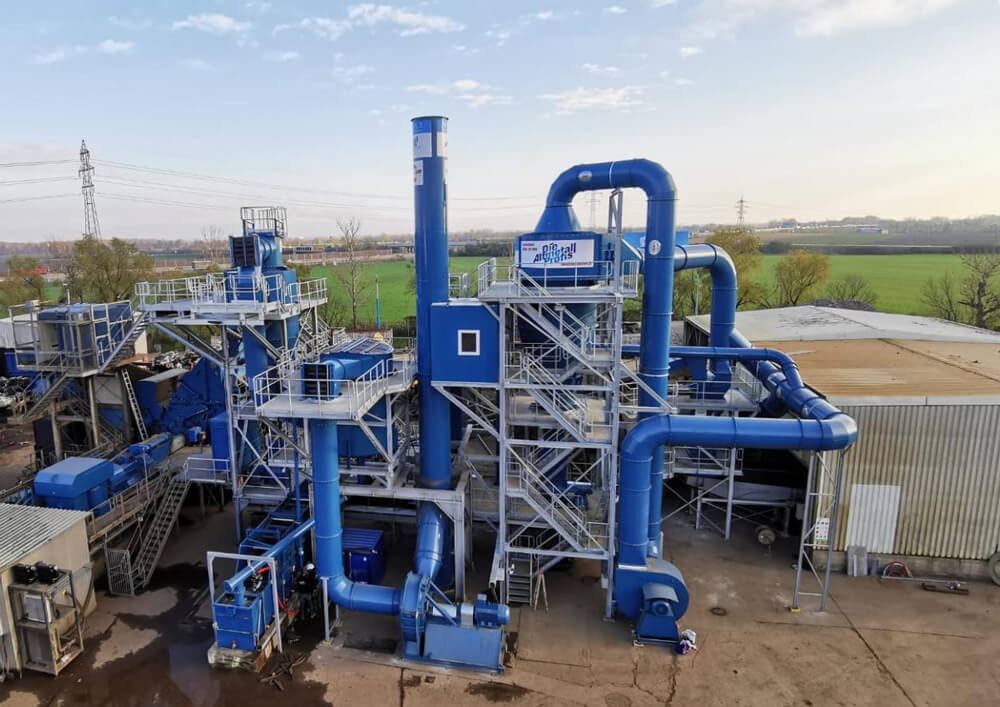Clean air authority
Découvrez l'offre et la formule globale de Lybover en matière de dépoussiérage industriel.
Lybover AIR propose des solutions pour préserver votre environnement des odeurs et de la poussière. Tout cela, pour garantir le bon fonctionnement de votre entreprise, dans une ambiance saine.
Garantir la meilleure qualité et les meilleures performances
maintenez vos processus à l’abri de la poussière
Offrez à votre personnel un environnement de travail sûr
réduire le risque de pollution de l’air
Évitez les pannes machines et les arrêts de production
En raison de dommages causés par des particules de poussière
Solutions totales
Lybover AIR combine différents composants pour construire des installations complètes de dépoussiérage industriel. Nous développons ces installations avec des dépoussiéreurs à décolmatage automatique à très faibles émissions en rejet et très économes en énergie.
Nous réalisons les installations selon notre propre savoir-faire, en fonction de vos besoins. Et nous le faisons selon notre méthode éprouvée :
- Analyse approfondie pour déterminer les points d’émission (de poussières)
- Installation de captations avec les débits d’air appropriés
- Connexion des points avec le système de filtration Keller Lufttechnik GmbH approprié
Grâce à notre approche intégrée, Lybover vous aide dans votre démarche: de la proposition conceptuelle à la préparation du projet, à l’installation et à la mise en service – pour lesquels vous pouvez en savoir plus ici.
Sur mesure pour votre production
Lybover AIR développe des solutions spécifiques d’aspiration en fonction de chaque process, en combinant une captation optimale des émissions et des techniques de séparation et de filtration les plus appropriées.
Vapeurs de colle, brouillards d’huile de coupe (huile entière ou émulsion) ou poussière fine – les processus de production industrielle tels que la formulation, le moulage, le forgeage, la projection thermique, le broyage, le meulage, l’extrusion ou la mise en peinture libèrent une grande variété de particules. La mise au point d’installations capables de capter ces émissions directement à la source et de les éliminer de l’air de manière fiable est une compétence en soi.
Il existe souvent plusieurs chemins vers le but ultime. Dans chaque cas, nous vous présentons plusieurs options d’installation, chacune offrant des avantages spécifiques. Vous déterminez la solution la plus adaptée à vos besoins et aux conditions de production spécifiques de votre entreprise.
Dépoussiéreurs industriels
Les dépoussiéreurs à décolmatage automatique de Lybover AIR garantissent que votre environnement reste exempt de poussière. Nos dépoussiéreurs sont conçus pour tous les usages : de l’extraction de la sciure de bois à la filtration de poussières explosives. Ils ont des débits d’air différents et sont conformes aux règles de sécurité les plus strictes.
Grâce à notre gamme modulaire, nos dépoussiéreurs peuvent s’adapter à presque tous les coins de votre usine ou de votre hall de production. Et nos experts en service garantissent un fonctionnement continu pour que votre installation reste efficace.
- Poussières fines: réduisez les émissions de vos installations de production
- Poussières fines et volumineuses protection contre les poussières fibreuses ou à charge statique
- Poussières collantes, inflammables et explosives la sécurité avant tout
- Séparateurs de brouillards d’huile ou d’émulsion : : filtre les aérosols les plus fins
- Pré-séparateurs et équipements périphériques
- Cabine douche d’air: nettoyage des vêtements de travail en 30 secondes
Notre formule à succès
Aucun projet chez Lybover n’est identique. Nos projets proviennent de secteurs très différents, allant de la production de céramique et de béton au recyclage ou à l’asphalte. Cela a donné à nos ingénieurs le savoir-faire nécessaire pour réaliser des constructions globales uniques en leur genre.
En outre, nous pouvons toujours compter sur l’expertise diversifiée de nos collègues au sein du groupe Lybover.
Grâce à notre formule totale éprouvée, nous obtenons le bon résultat pour notre client.
- Offre
Un accord sur un prix fixe dès le départ - Étude et calcul
Analyse détaillée du processus selon les réglementations en vigueur (y compris les réglementations de sécurité ATEX) - Bureau de dessin
Les matériels et logiciels les plus modernes (mise en plan 3D du concept et numérisation 3D du site existant) - Exécution du projet
Simulation aéraulique CFD du débit d’air préétudié - Montage industriel
En conformité avec les normes VCA** (et équivalents étrangers) - Service après-vente
Service pour votre installation et disponibilité des pièces détachées
Expertise dans différents secteurs
- Bitume
- Produits chimiques / pharmaceutiques / alimentaires
- Bois
- Céramique / carrière
- Plastique / caoutchouc
- Métal (laser et plasma, coupe, fonderies, peinture, meulage, projection thermique)
- Papier et carton
- Recyclage
- Lin
